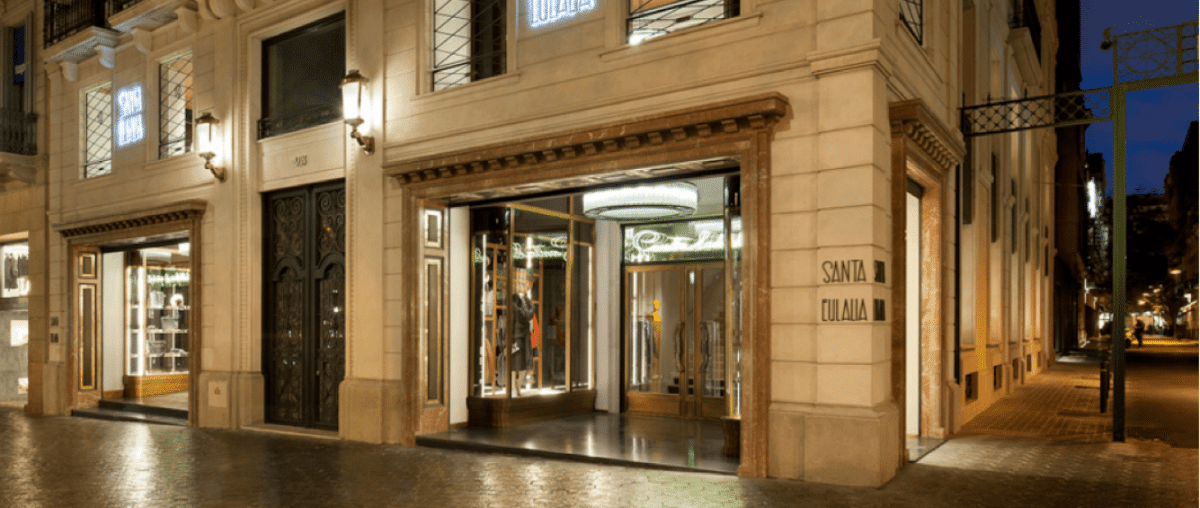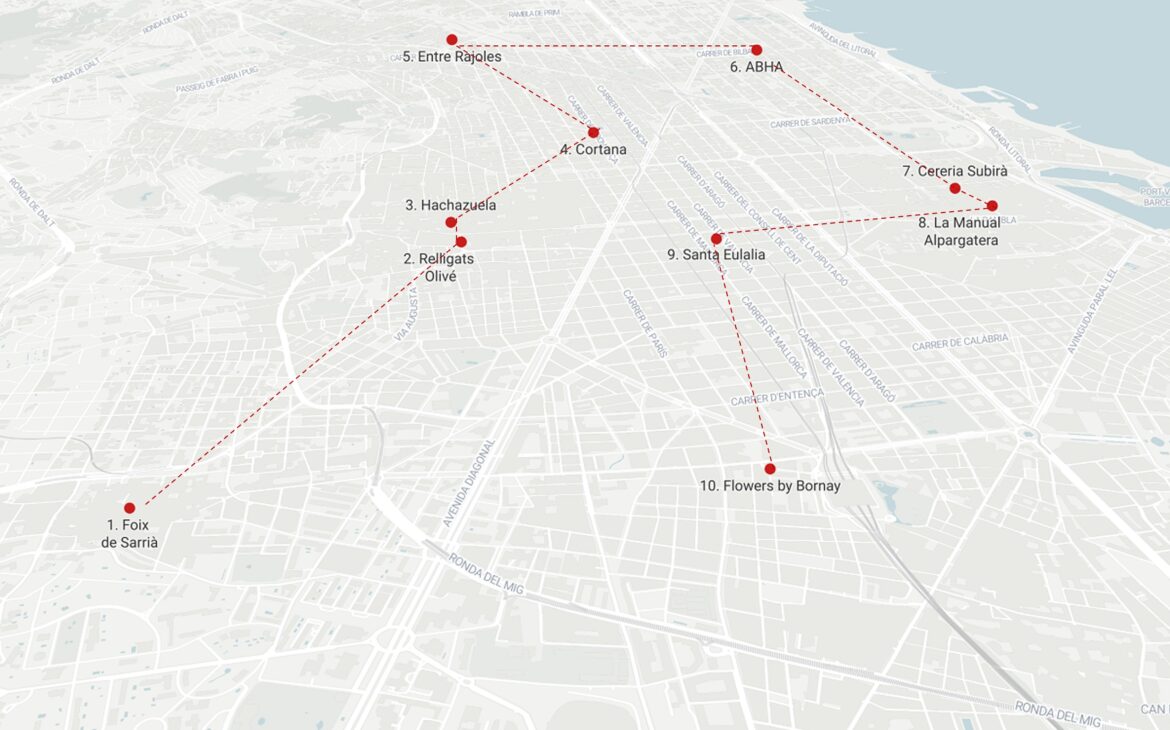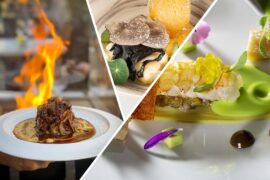From the guild Barcelona of the Middle Ages to the handmade stores and workshops of the 19th century, the Catalan capital has a long history of artisan tradition. There are many disciplines and manual processes that over the centuries have made a niche in the commercial sector of the city, promoting the production of all kinds of handmade products that, although originally were of basic necessity, over the years have become decorative and supplementary pieces, and emphasizing the aesthetic sense to the already functional and personalized.
At the beginning of the 19th century, references such as Gaudí or Jujol took local craftsmanship to a universal level, vindicating Barcelona’s hegemony as a mecca of a genuine, lasting and high quality way of doing things. The legacy of these names also includes major firms that have worked over the last century to turn their craftsmanship into a cultural asset. Brands such as TOUS have made the jeweler’s craft a hallmark of identity while creating a unique combination of innovation and craftsmanship. Thus, this love for the jewelry trade is extended to new generations through the TOUS School, betting on the preservation of a historic craft and transmitting the excellence of craftsmanship and the value of restoration, in favor of sustainability.
The handicraft trade, seen today, sustains identity values that – in addition to those of sustainability already mentioned – deserve to be reinforced, since they emphasize a cultural legacy marked by ancestral know-how.
Although over the years many trades have been lost and have been disappearing from the streets of the city, today we still find some stores of artisan nature that work to give value to these ancient crafts and recognize their legacy, as well as their key role in the development of new techniques and artistic currents. We travel through some of Barcelona’s neighborhoods and put the spotlight on some of the heirs of the old craftsmen who turned their trade, beyond their lifestyle, into an art.
1- Foix de Sarrià, sweet temptations
This century-old pastry shop, founded in 1886 by master pastry chef Josep Foix Ribera and his wife Paulina Mas Rubinat, is a true institution in the city and more specifically in the Sarrià neighborhood that gives it its name. Crossing its glass door is like traveling back in time and entering into a sensory experience capable of trapping and generating great dilemmas of choice even for those with a sweet tooth. Its oak wood shop windows, furniture and ceiling evoke the past and a tradition that today is kept alive from its workshop, where a wide selection of cakes and sweets are handmade and creatively made from high quality natural ingredients. The result is a complete range of handmade proposals with great attention to detail, ranging from the most classic -special mention to its cream nougat- to the most original and innovative, and even some patented star creations such as Les Petxines de Sarrià.
- Foix de SarriàAddress: Major de Sarrià, 57 – Plaça de Sarrià, 12-13
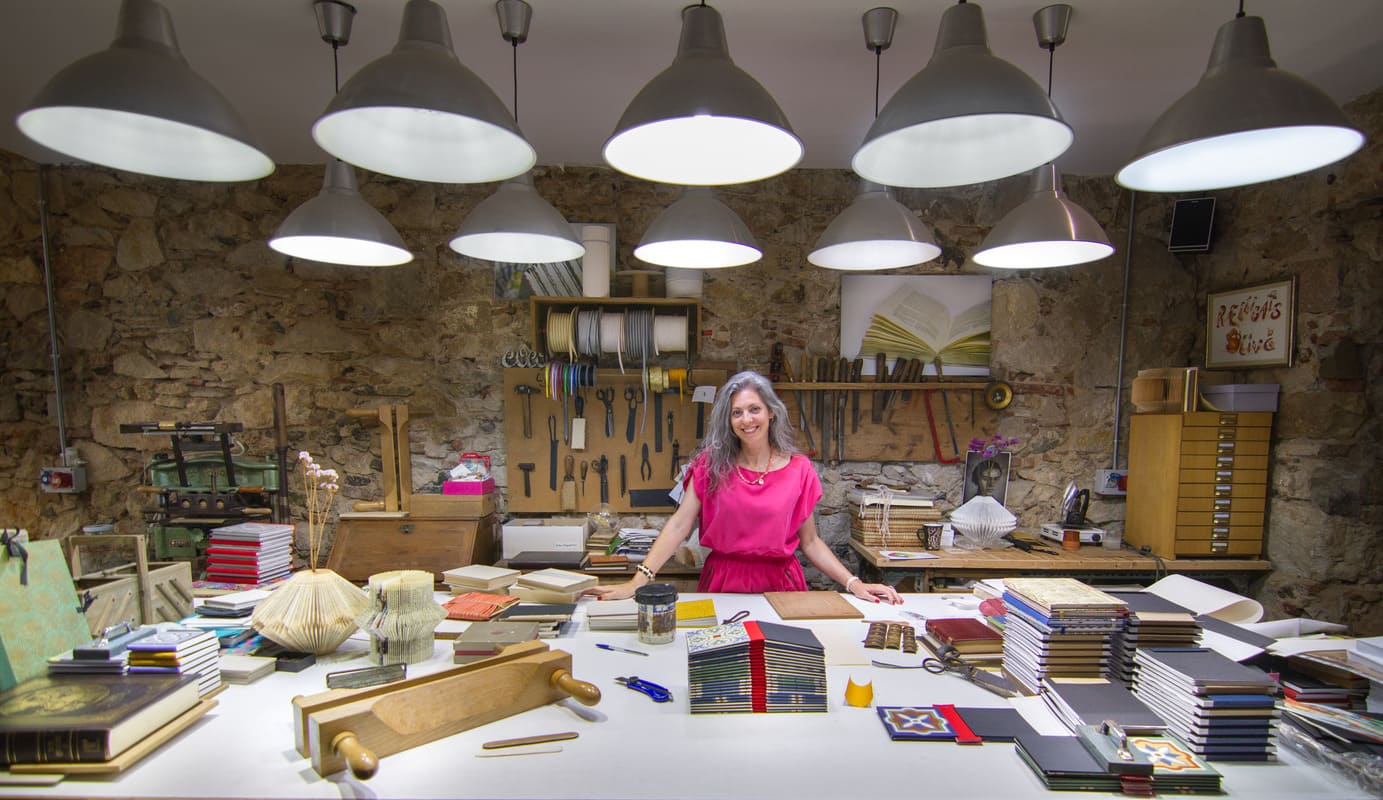
2- Relligats Olivé, the art of bookbinding
This traditional family business began in 1945 as a workshop in the Gràcia neighborhood, and over the years has been cultivated with the charm that surrounds antiquity and certain airs of nostalgia. Along with the bookbinding trade, Relligats Olivé expanded the business in 2013 with a store where the company’s own creations are sold. “The craftsmanship begins first with the personal attention of those who come to bring us an order or to buy a handmade product, exquisite and select,” says Geòrgia Olivé. The workshop combines ancient and laborious techniques with others adapted to our times of immediacy, but “our profession is characterized by patience and perseverance and by the ability to evoke all our esteem for paper, books and everything that surrounds them,” adds Olivé.
- Relligats Olivé: Berga, 13
3- Hachazuela, wood artisans
Olive wood and alabaster are the starting point for each new creation of this workshop that, from the neighborhood of Gracia, produces handcrafted objects for everyday use. Furniture, kitchenware, lighting and all kinds of decorative objects are created through traditional methods, with simple hand tools and wood from sustainable forests which, given its uniqueness, makes each piece unique and exclusive. Based on the motto “to be universal you must be local”, the hands of sculptor Javier Úbeda work each object with love and patience, giving them a genuine character that goes beyond the purely functional, in a clear commitment to the natural, the handmade, for pieces with identity and character. Hachazuela points out that “craftsmanship must be promoted so as not to leave our origins behind”.
-
Hachazuela: Astúries, 31
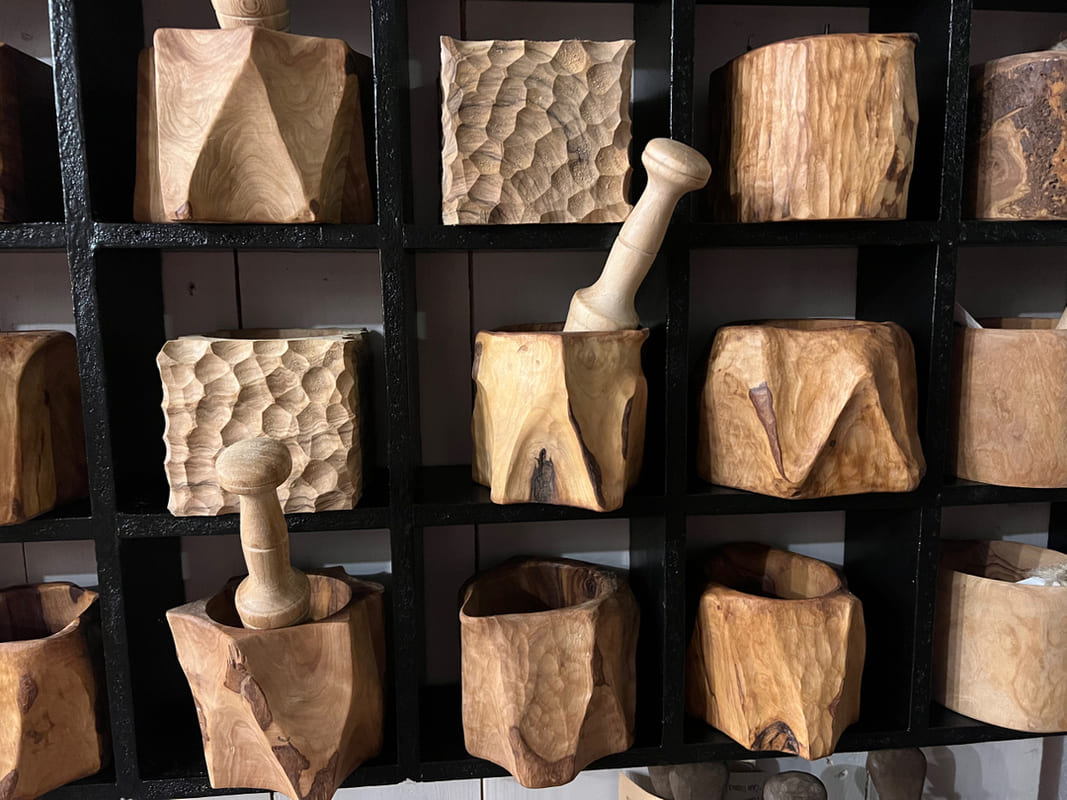
4- Cortana, garments with love for nature
The simple, serene elegance with Mediterranean reminiscences characterizes the designs of this fashion brand, whose vaporous creations imprint an absolute purity. Based on the design of its designer, Rosa Esteve, the creations are made in a sustainable way in small workshops with high quality natural materials. With a palette of neutral colors, inspired by Mallorca, the designer’s homeland, each piece is made by artisan hands that materialize the art of dressing with timeless designs, full of sensitivity in their conception and made with delicacy. A pioneer of slow fashion, she offers a palette of colors and unique prints in high quality natural fabrics that are applied to each piece resulting in couture collections based on a delicate, powerful and very feminine style.
- Cortana: Carrer Provença, 290
5- Entre Rajoles, the craft of ceramics
From the “interactive showcase” of her shop-workshop in the Sagrera neighborhood, the artisan Natalia Galera makes her ceramic creations in full view of passersby. His designs with majolica ceramics, recover a craft of the thirteenth century, barely existing and difficult to reproduce. After working in a workshop for 17 years, where he learned the trade from the ground up, he undertook Entre Rajoles, a personal project to show and disseminate this traditional and laborious technique and to try to recover interest in the culture of tile. And it does so with recreations of pieces from the 15th to the 19th century that can be found and studied in museums or in the streets of Barcelona. Recently, he has also implemented the majolica technique with modern designs (inspired by Old School tattoos, retro comics or of a revolutionary nature) that bring the craft closer to the 21st century. “Without this 13th century craft, there would have been no evolution of ceramics. I am working from the starting point and from there I recreate myself,” says Galera about the need to maintain the tradition and craftsmanship of origin.
- Entre Rajoles: Montlau, 49
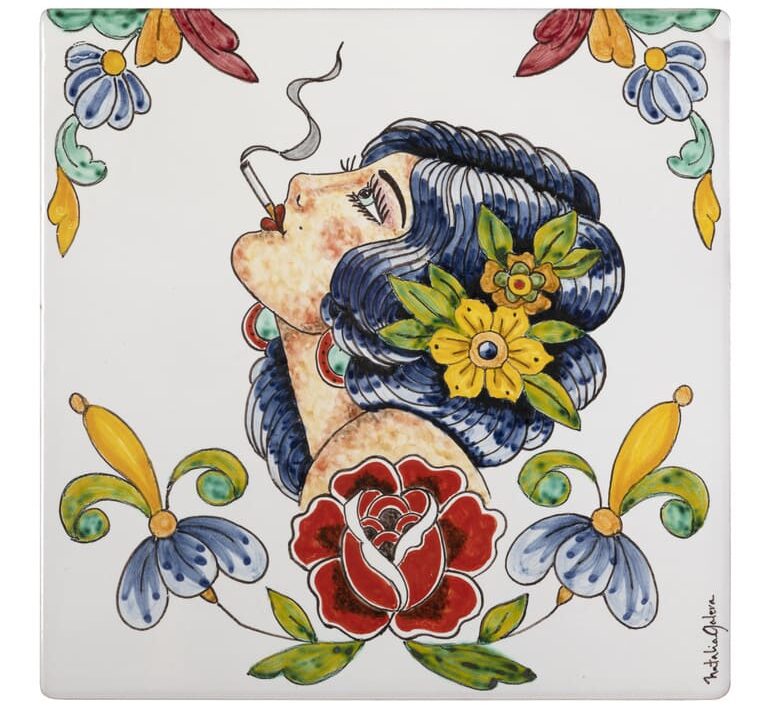
6- ABHA, the contemporaneity of macramé
The macramé technique, based on weaving and braiding natural fibers by hand using knots, is at the heart of Ikram Maymouni’s work. This craftswoman and designer, creator of the ABHA studio, recovers this type of textile craftsmanship whose origins date back to the time of the ancient Egyptians, giving it a fresh and contemporary air. From experimentation with knots and new formats, she makes ornamental pieces with her own hands using materials such as cotton, jute or linen. From his studio in the Poblenou neighborhood, Ikram teaches creative workshops that delve into the technique of knots through exclusively handmade creations. The resurgence of macramé as a decorative and sustainable trend contributes to give visibility to an ancestral, creative and genuine craft.
7- Cereria Subirà, the temple of candles
The oldest store in the city is possibly one of the most enigmatic. Behind its baroque façade, a wide selection of candles and candles handmade with high quality beeswax and kerosene, presides over an interior full of symbolism, evoking past times, even going back to 1761, the year of its opening. Although the business was originally focused on an essential product, its more than two and a half centuries of history and the social and lifestyle changes have turned its star product into a handcrafted and decorative element that has been reinterpreted following the trends of the moment and has become a reference of the candle culture, but without losing its symbolic power and evocative spirit.
-
Cereria Subirà: Baixada de la Llibreteria, 7
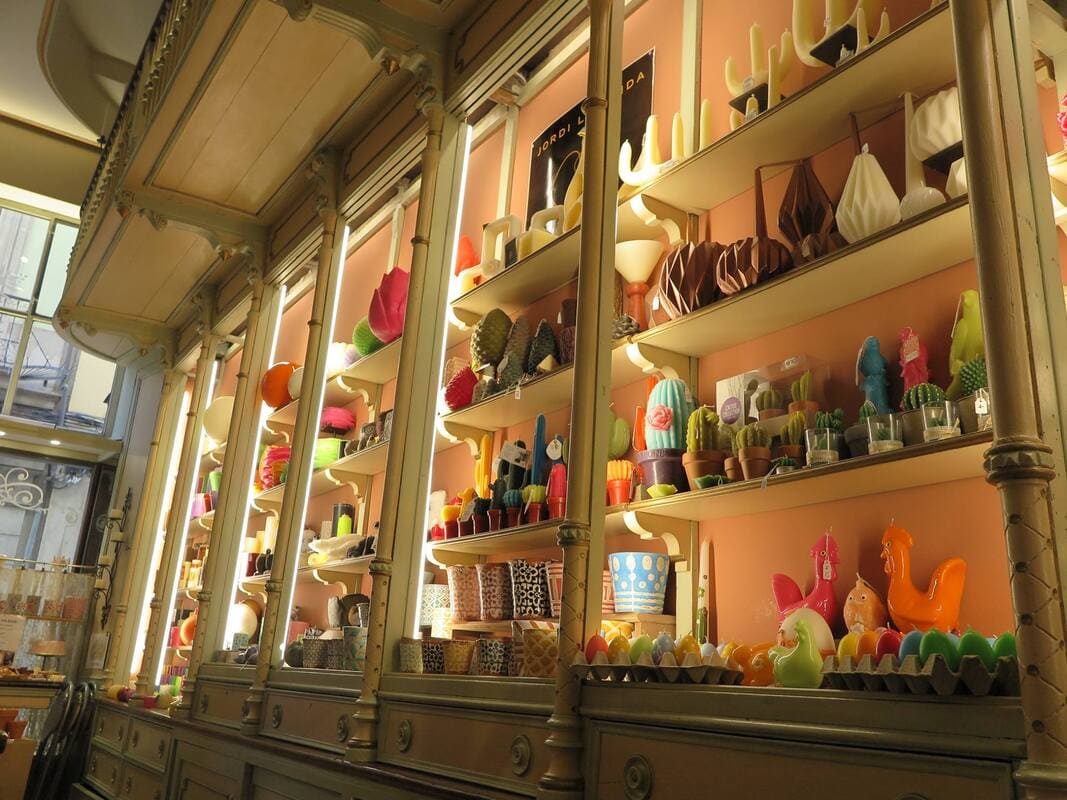
8- La Manual Alpargatera, casual fashion with a firm footing
For some time now, espadrilles have become a must-have for any summer and mid-season look. However, at La Manual Alpargatera, the passion for this traditional footwear dates back to the 1940s, when this shop-workshop opened its doors in the heart of the Gothic Quarter, combining its commercial and production facets. La Manual has been sewing espadrilles by hand in its backroom since 1941, starting from a base of vegetable fiber (jute) with cotton, hemp, silk or linen uppers in various colors. Timeless designs are combined with new creations based on a manual work that plays with natural and sustainable materials to give shape to ethical designs that seduce with their shapes and comfort. Its elaboration honors the artisan process, while showing a great commitment to keep alive the craft of espadrille making.
- La Manual Alpargatera: Avinyó, 7
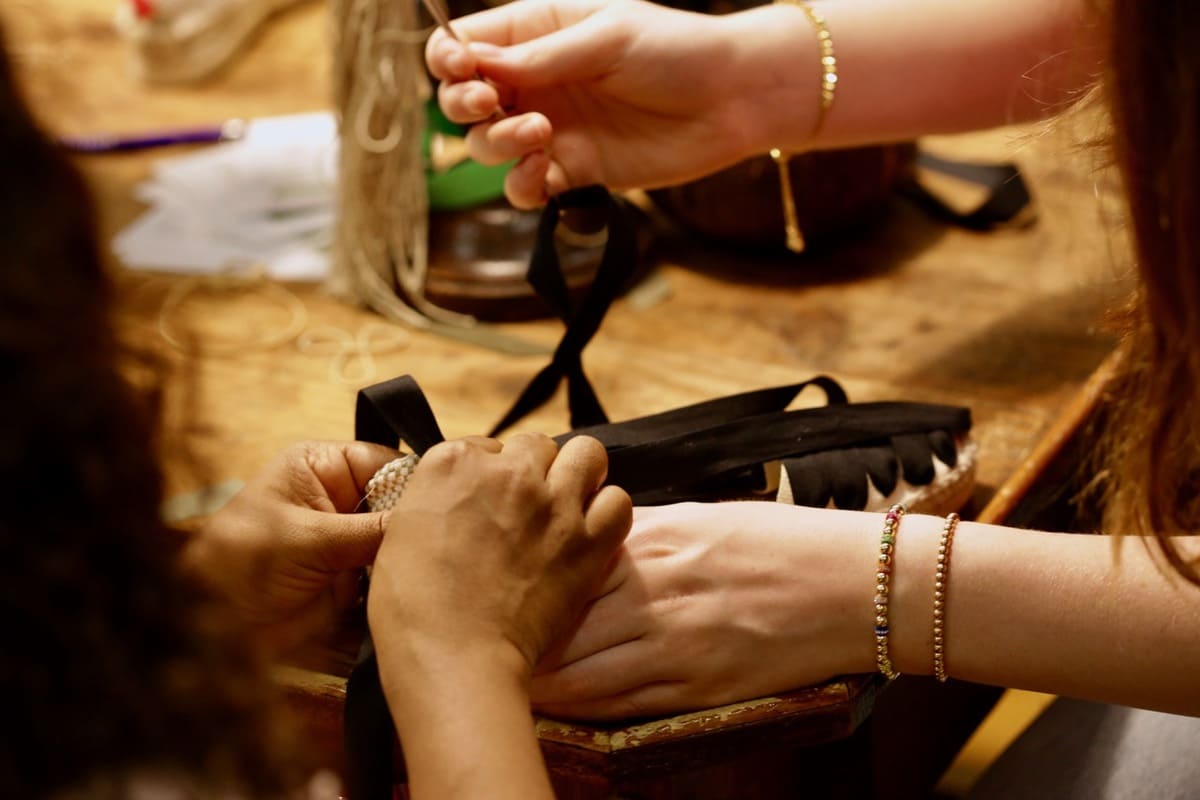
9- Santa Eulalia, exquisite tailor shop
The epicenter of luxury fashion in Barcelona, this great boutique Passeig de Gràcia is a true spectacle in itself, not only for the designs found there, but also for its formal nature, where it fuses the most avant-garde design and the latest trends with artisan know-how, focused on tailoring and custom-made shirts, where exclusive patterns are created based on the preferences and nature of the client. In the case of Santa Eulalia, for the elaboration of this type of pieces, a dozen officials work from their workshop in Passeig de Gràcia, the largest and one of the oldest in the country, to give shape to true pieces of art, symbol of elegance and uniqueness.
- Santa EulaliaPasseig de Gràcia, 93.
10- Flowers by Bornay, the most creative floral art
Far from conventionalisms, to enter the universe created by Fàtima Valldeperas, Marta Vidal and Joan Xapelli is to do so in a creative and contemporary work that traps and seduces. Their bouquets and floral arrangements rise to the category of art, with designs of great visual power from innovative techniques that advocate the most attractive and free originality. And all this with popular culture (movies, comics, music, dance, literature, painting…) as the main source of inspiration. Specifically, the idea of applying paint to flowers arose from “the desire to stage science fiction landscapes.” From their workshop, located in an old factory in the Sants neighborhood, they project visual experiences taking the world of floral art to a new dimension.
- Flowers by BornayAddress: Melcior de Palau, 36
